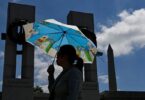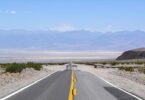Iceland (AFP): Iceland officials said Friday that the volcanic eruption that began last weekend near a fishing village was over, but warned that the area was still dangerous.
The Icelandic Meteorological Office (IMO) said that “seismic activity continues to decrease in the area of the magma dyke”, with observations showing that ground movement and deformation had slowed significantly from previous days.
“This information suggest that magma is no longer flowing into the dyke and the eruption has ended,” the IMO said.
But while hazard levels had decreased in the zones near the eruption, the agency said the area near the fishing town of Grindavik remains treacherous.
“There is still a high danger of ground collapse into fissures within the town,” located on the Reykjanes peninsula in Iceland’s southwest, it said.
On Sunday, Grindavik was hastily evacuated just hours before a volcanic fissure opened up in a nearby field.
A second crack then opened right on the edge of town, sending orange lava flowing into the streets and reducing three homes to ashes.
It was Iceland’s fifth volcanic eruption in under three years.
The most recent occurred just weeks ago on December 18 in the same region, which had prompted authorities to evacuate Grindavik’s 4,000 residents weeks before as a precaution.
Shortly after the December 18 eruption, they could return only for brief periods before being allowed on December 23 to return permanently, though only a few dozen chose to do so.
On Wednesday, the IMO said there were no longer any visible signs of the eruption but noted that “magma accumulation” continued in the area.
Iceland is home to 33 active volcano systems, the highest number in Europe.
It straddles the Mid-Atlantic Ridge, a crack in the ocean floor separating the Eurasian and North American tectonic plates.
Until March 2021, the Reykjanes peninsula had not experienced an eruption for eight centuries.
Fresh eruptions occurred in August 2022, and July and December 2023, leading volcanologists to say it was probably the start of a new era of activity in the region.







